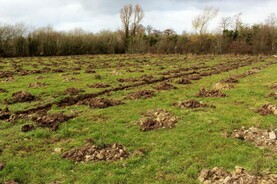It only seems a few weeks ago since we talked about bovine TB on this page. That’s because it was only five weeks ago that farmer dissatisfaction boiled over, following an unfortunate choice of words in a parliamentary written response, quickly clarified by Minister for Agriculture Charlie McConalogue.
However, the latest statistics propel it back into the limelight. Herd incidence over the first three months of the year is up to 4.99%. That’s one in 20 herds currently under restriction. And if we take that each herd is neighbouring three others, on average, that means that one in five farmers is either involved in increased testing or at risk of increased testing as a contiguous herd.
Not all contiguous herds have to undergo extra herd testing. That depends on the scale of the outbreak on the neighbouring farm and/or the number of herds under restriction locally. However, even being on notice of potential extra testing is a stress for farmers.
While the minister quickly withdrew any inference that farmer representatives are viewed by Department officials as holding up progress, there is tension between the farm organisations, particularly the IFA and the Government.
To an extent, this is inevitable, as the Government will always ask more of farmers to try to minimise the spread of TB, while farmer representatives will always look for more support for farmers to help them comply with a more rigorous regime.
And that tension is always likely to be higher when TB levels are increasing, putting strain on farmers and Government budgets alike. There is always likely to be an element of finger-pointing.
Prominent communication
What to make, then, of last week’s full-page communication from the Department of Agriculture directly to farmers on the reverse side of this very page. More prominent than a European election candidate’s last pitch to voters, it was text-heavy. I’d still wager it was well-read by farmers, as it offered an explanation of how best to reduce cattle-to-cattle TB transmission.
There doesn’t need to be a battle over whether the primary cause of the disturbing trend of continually increasing TB cases is down to wildlife infection or cattle to cattle transmission.
The reality is that deer, badgers and bigger cattle herds, in particular, are contributory factors.
What farmers need is for everyone, including vets, to put the green geansaí on and work together.






 This is a subscriber-only article
This is a subscriber-only article










SHARING OPTIONS: